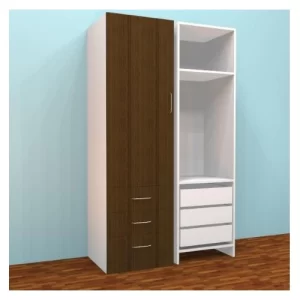Today, many homeowners are developing a
strong preference for local furniture rather than imported products, and
noticeable shifts can be observed in consumer buying habits, with decor brands
that promote regional craft and local skills and materials.
Furthermore, as people and organisations
turn inward to improve comfort and well-being, demand for bespoke, handcrafted
products has risen significantly. This growing enthusiasm for indigenous goods,
fuelled in part by the pandemic, has prompted furniture designers to boost the
ante and provide designs that meet worldwide standards in terms of quality,
detailing, and ergonomic comfort.
Multiple textile and soft furnishing
companies doing business abroad have opened retail outlets in India to cater to
a well-traveled consumer base as a result of these advancements in the
furniture industry.
Mangrove Collective’s Principal and Head of
Business, Suman Sharma, states, “The act of manufacturing furniture
necessitates a delicate mix of ergonomics (comfort), joinery details (craft),
practicality, and aesthetics. We believe that things must give value because
they have an emotional connection with their owners. If necessary, both
handcraft and technology must be used, and items must be manufactured with
materials that have been carefully chosen and procured. Designers all
throughout the country may produce goods that honour craft-to bring joy to
whichever area they inhabit by looking at products and processes in fresh ways,
limited only by their imagination.”
Infuse character: It’s simple to make a
Pinterest version of what a place should look like, but how can you give it
personality? It’s simple to create a lookalike replica, but what actually adds
dimension to a room is its personality and how it interacts with its surrounds.
Customizing a product allows it to become an extension of the client’s
personality and taste, opening up a whole new world of possibilities. More
importantly, it speaks to the designer’s, furniture makers, or craftsperson’s,
and owner’s shared vision in co-creating the object, resulting in a superbly
produced, high-quality piece. For a country like India, which is home to a
wellspring of crafts traditions, we have at our disposal a tremendous
opportunity to integrate indigenous expertise with modern engineering-to
develop ergonomic and beautiful pieces of furniture. By reclaiming indigenous
and obscure crafts, local brands give them a new lease of life, reinterpreting
and adapting these skill-sets for contemporary living.
Quality: Making a good piece of furniture
necessitates a thorough understanding of what raw materials may be utilised and
how they can be combined with our traditional trades and processes. Cane
weaving, for example, is a time-honoured technique that dates back centuries,
but it is seeing a resurgence in popularity in recent years. Cane weaving can
now be used to create comfortable and long-lasting furniture that is suitable
to our tropical climate and setting thanks to the incorporation of current
technology. Courtesy: www.ahmedabadmirror.com


